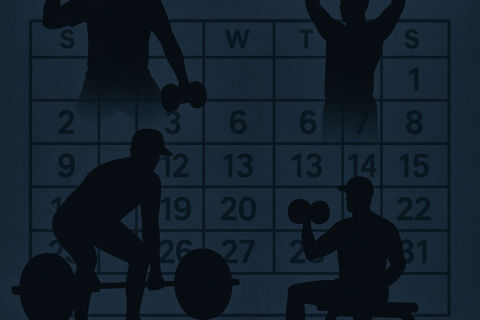Do It The Right Way: Building the Best Player Development Ecosystem
High school aged players have a very tough task navigating their high school process these days. Gone are the years where the high school coach was the dominant voice, a player played Summer ball for their local league, and splitting time in the offseason amongst different sports was commonplace. We have quickly ushered in a time that sees many entities involved in the player development process: personal trainers/coaches, travel ball coaches, high school coaches, training facility, advisors, etc. All of these “cooks in the kitchen” most certainly can have value, but balancing the role and value of each entity can be very challenging and confusing for high school players and their families. This piece examines how we can all work together to create the ideal Player Development Ecosystem and how every family family should strive to create their own system to help get them to the highest levels of the game.
The Mandatory’s: Losing Ego & Emphasizing Communication
The collective checking of ego’s is the key to making this work
Egos are the main detriment to all things in the coaching world, and can often times be the main inhibitor in the player development process. Coaches that value and hold onto control and possession are the toughest to incorporate into the ideal Player Development Ecosystem for high school athletes. So losing the ego is the #1 requirement to creating that ideal ecosystem. When a singular, collective vision, doing what is best for the athlete, is taken on by all of the different coaches involved in the process… magic can happen. If everyone understands their roles, and work together to ensure success, players and families can navigate this process much easier and the right thing can happen with less stress and confusion. It’s when coaches feel like they need to dominate, undermine, and control the entire process is when things break down. Every coach has their role in this ecosystem and can provide incredible value, but egos have to be checked and the focus needs to be on what is best for the athlete. Control must be ceded to others in different areas of expertise so that the athlete can get the proper perspective on the process. This can be painful for some coaches, but is necessary to make this work for the athlete.
Communication is king
Once we get past the ego, and one of the best ways to help temper egos, communication is the most important part of this process. Clear, concise, and honest communication is the key to developing the ideal player development ecosystem. Here is an example of how each part of this equation can understand communicate their roles to other parts to ensure everyone is on the same page…
- Athletes – Express how you’re feeling, who you want to lead the process, and be honest about your priorities
- Parents – Be realistic about your son/daughter’s ability and communicate your expectations and questions about the process
- High School Coaches – Understand the value of the offseason and communicate to travel ball coaches and trainers on what you want prioritized in the training and club ball environments
- Club/Travel Ball Coaches – Take in and value the input of high school coaches and value their time with the athletes in the Spring. Communicate to high school coaches the different areas of emphasis in the offseason and work with the high school coach on recruiting with open lines of communication
- Trainers – Understand the value of field competition and practice, while balancing the training needs of each athlete. Communicate to the field coaches what the athlete is working on physically and prepare the field coaches with reports on the current levels of the athletes and any health reports that are relevant
When all parts of this process understand their roles, and they openly communicate with each other, the athlete and their families can have a much easier time and a much better experience navigating the developmental process in high school. An athlete and family should designate who is running point on what, and then share that with everyone and ask for honest and open communication. This is essential when developing the ideal Player Development ecosystem.
Bridging The Gaps
The process of developing the ideal player development system for high school athletes
Now that the absolutes, losing egos and prioritizing communication, are established, we have to create the system that involves all parts of the equation working together to solve the problem for the athlete and his/her family. Like most processes, this is a layered approach that starts with a solid foundation and is built upon a collective trust and mindset of success.
The Foundation – The Athlete and Their Family
The athlete and their family should be at the center of this process, as it is theirs and they are the ones that need to possess it. The athlete needs to constantly look out for his/her own needs, while balancing the dynamics of team, family, academic, and social life.
During the high school years, there are many demands for a high level athlete’s time… practice, training, friends, school, family, etc. It can be very difficult to segment and prioritize all of these different elements, especially as each of these dynamics should be prioritized at different points in time. At any given time, the athlete needs to do what is best for themselves, as their health and well being is the only thing that matters when push comes to shove. When its Friday night after a long week of practices and games, friends should be the priority. When it’s a family member’s birthday and there’s a party, family should be the priority. When it’s a pre-game warmup before a Sunday tournament game, the baseball team is the priority.
The lines get blurred between all the different entities during the gray area time. The time that is up for grabs between coaches, trainers, friends, and family. What is more important for an athlete…. strength training or skill work? Field practice or history homework? All of this is contextual to each athlete and moment and there are no right or wrong answers. What we know works best is a fluid approach that prioritizes each athlete’s individual needs. What happens if a coach gets upset when an athlete does that? The coach needs to see the mandates outlined at the top of this blog… check the ego and engage in communication.
The supporting layers: Coaches & Trainers
The supporting layers is often where this process can go wrong, and it almost always has to do with egos and communication. There is always gray area to navigate, but if everyone checks their egos and communicates, there is almost always a workable solution to any issue that arises. Everyone has an important role in this process and can work together to ensure the ideal ecosystem is setup for every athlete…
- The High School Coach – Depending on the geographic area, the high school coach has various levels of engagement and power in this process. At minimum, the high school coach is the dominant force for the athlete during the high school playing season. This should be respected by all involved and there should be communication on any variance of the high school coaches’ plan. But that does not mean that the athlete can only do what the high school coach wants… what about if they get a lot out of a facility training session or if they have a private coach that helps them? See items #1 & #2… if it’s best for the athlete… check the ego and communicate about what’s going on. If a high school coach has a great relationship with the player and wants to work with him in the offseason, a club coach should be fine with that, granted there is open communication.
- The Club/Travel Coach – The power of the club coach has been growing, and given the fact that youth sports is a billion dollar a year business, the club coach will continue to grow in influence. Many times, the club coach can spend much more time with the athlete and does not have the same time restrictions a high school coach might have. Because of the large amount of time, the seasonality of the club schedule, and the vast networks many club coaches have, many times the club coach will lead the recruiting process. The good club coaches include the high school coach in this process as much as possible. Very often the club coach uses the teams as means of making a living, which can cloud the process and often times motivation needs to be questioned by the athletes and their families. The good and just club coaches are transparent and honest and they just want what is best for the athlete.
- The Trainer – with the advent of specialized training at the youth ages, the trainer and training facility have a growing place in this process. The stark reality of the situation is that high level achievers in the athletics world are the biggest, strongest athletes with the best movement patterns. With this objective knowledge, the trainer should have considerable influence on the process and be essential in creating the ideal player development ecosystem. The trainer has an unbiased opinion and is solely dedicated to the physical development of the athlete. The great trainers are the ones that communicate well and bridge the gap to the field coaches and athlete performance on the field.
The Roof: The future of the athlete
The effectiveness of creating the ideal player development ecosystem by all of these different entities will be how much the individual athlete achieves. The problem is, if this ecosystem breaks down or is not created, the ability of the athlete to reach their potential is severely compromised. That is why it is so important for athletes to take the power and create this ecosystem, and eliminate those that don’t want to participate properly. They get one shot at this, they need to be right almost every step of the way. The good news is that when done properly, the creation of this ideal player development ecosystem can serve every need and desire of the athlete and they will have the best chance to realize their dreams. With the proper perspective by the athlete and their parents, the checking egos by the coaches and trainers, magic can happen and the right thing can happen… a group working together with the success of an athlete as their sole priority and motivation.
““


